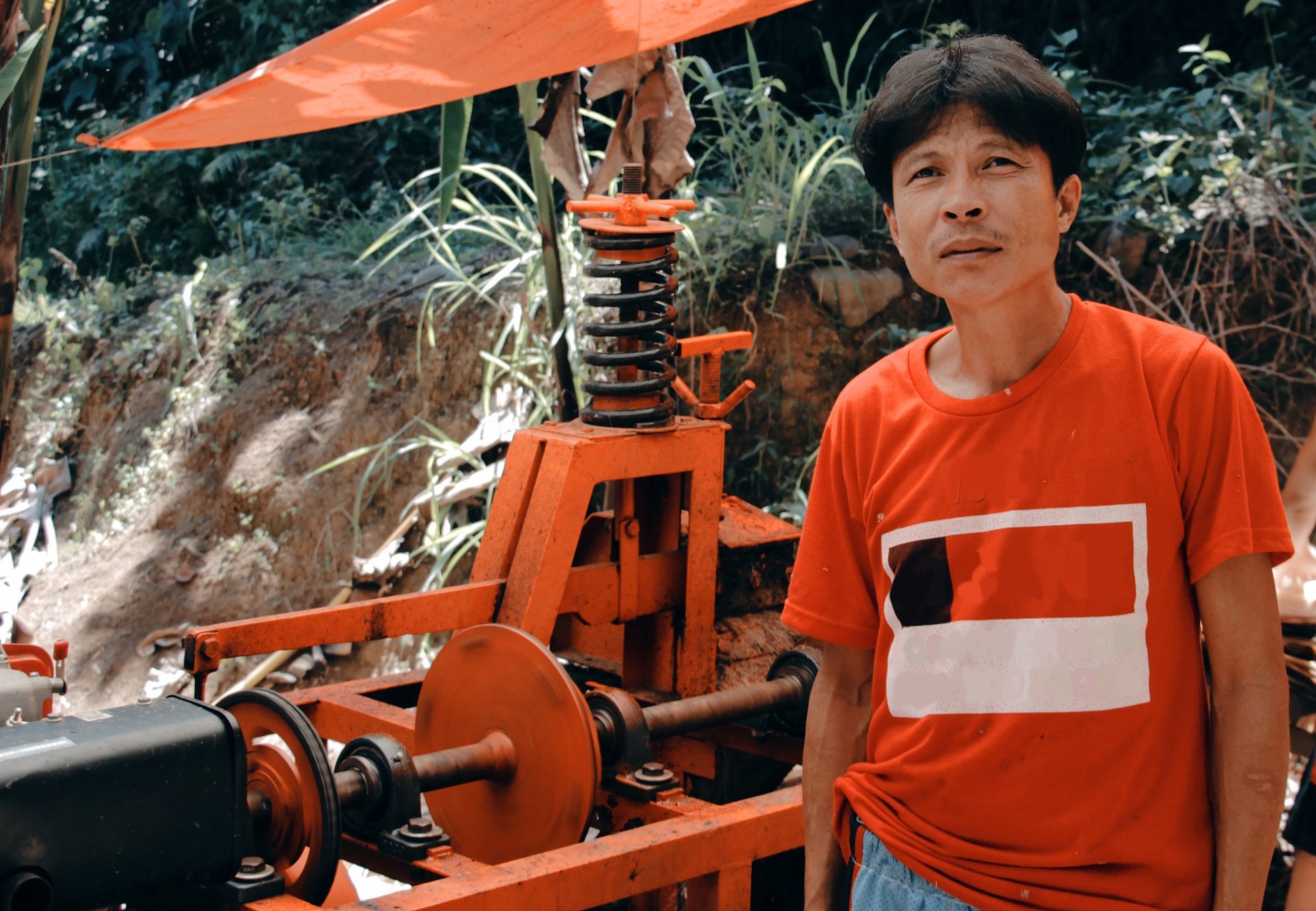 |
Using mechanized equipment hastens the stripping of abaca stacks and improves the quality and market price of abaca fibers. Take it from Gil Gabales, abaca-planter for 20 years, who switched from wide stripping (laguras) to mechanized stripping for almost a year now.
Manong Gil, 43 years old, is a beneficiary of the Special Area for Agricultural Development (SAAD) Program of the Department of Agriculture – Caraga. The abaca production project (worth Php 1.9M) included four abaca stripping machines shared among 41 members of the Culiram SAAD Abaca Farmers Association (CUSAFA) in Talacogon, Agusan del Sur.
“There is a huge difference in output and income between manual and mechanized stripping,” expressed Gil. “With the machines, an individual can strip around 30 to 40 kilos of abaca fibers, which is thrice the reach of manual labor in a day. Plus, machine-stripped fiber is priced high in the market, almost double the price of manually processed fibers.”
Manong Gil had an existing abaca plantation before the SAAD Program arrived in Barangay Culiram. While waiting for the SAAD-funded abaca plantlets to mature by 2021, he and members of CuSAFA have been utilizing the stripping machines to boost their production.
According to Manong Gil, about 1,111 abaca plants can fit in one hectare of land. From the said piece of land given one cropping season, he harvests an estimate of 925 kilos of abaca fibers.
With high-quality abaca fibers, Manong Gil’s profit per harvest runs around Php 70,000/hectare, which is 35% more than manual labor. Under the same condition, his annual profit will amount to Php 280,000/hectare because abaca trunks replenish themselves after 3-4 months.
The income potential of abaca fibers
Abaca, also known as Manila hemp (Musa textilis Née), is native to the Philippines. According to the Philippine Fiber Industry Development Authority (PhilFIDA), abaca fibers are the strongest among natural fibers making them more marketable over synthetic fibers.
With abaca fibers worldwide consumption predicted to increase over the years and the Philippines being the top exporter, the potential for Filipino farmers to capitalize on the commodity has become more pressing. But to maximize this potential, mechanized stripping should complement their production.
As of writing, in Agusan del Sur, machine-stripped abaca fibers are priced at Php 92/kl while hand-stripped produce is at Php 57/kl. The reason behind the 35-peso difference is the former’s produce being white ivory while the latter is dark brown.
Farm modernization is among DA’s eight paradigms to level up agriculture. It ensures that agricultural production is sustainable and efficient such that farmers can move from subsistence farming to market-oriented farming.
When asked what advice Manong Gil would give to abaca farmers alike, he said, “If you have access to stripping machines, try as much, as possible, to use them. In our community, we encourage our fellow farmers, especially non-members, to borrow our stripping machines provided they spend for the fuel and maintenance. All in all, this will increase their profit.”
As has been emphasized by the Department of Agriculture, farm modernization plays a crucial role in the pursuit of a food-secure Philippines.
The case of CuSAFA, with Manong Gil leading the group, shows that local farmers are capable of putting their best foot forward if provided with adequate resources and knowledge.






